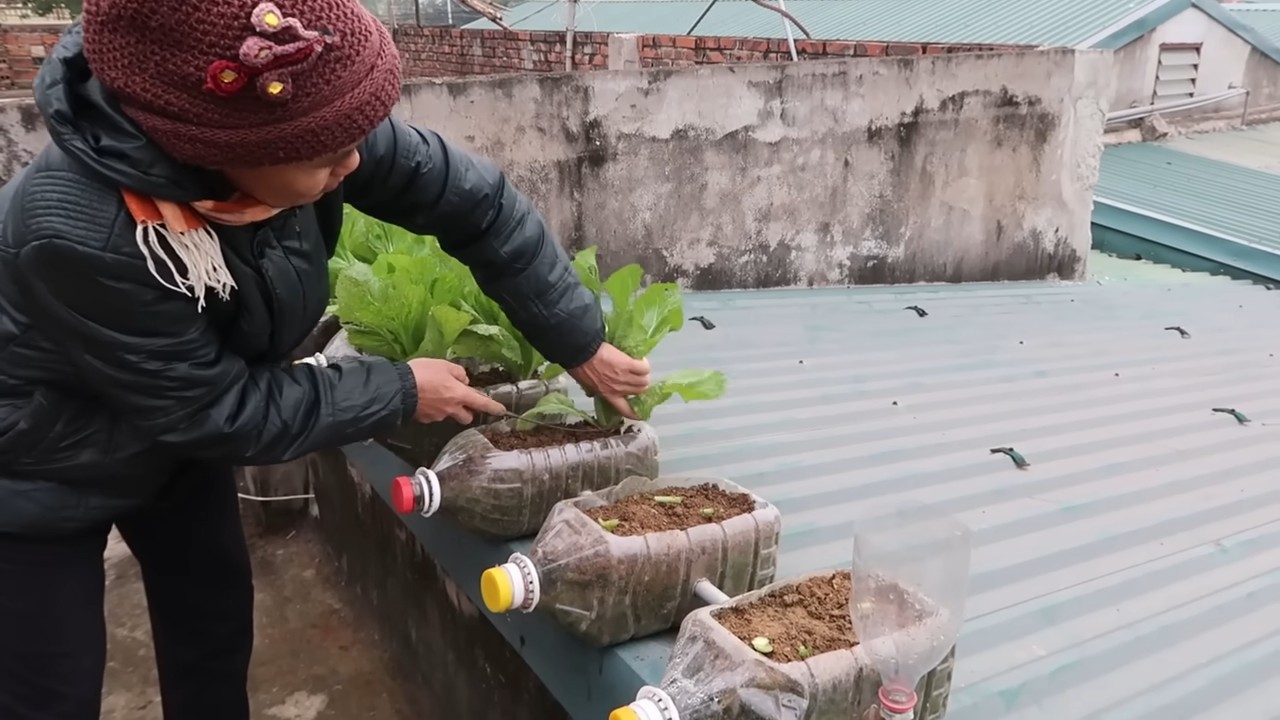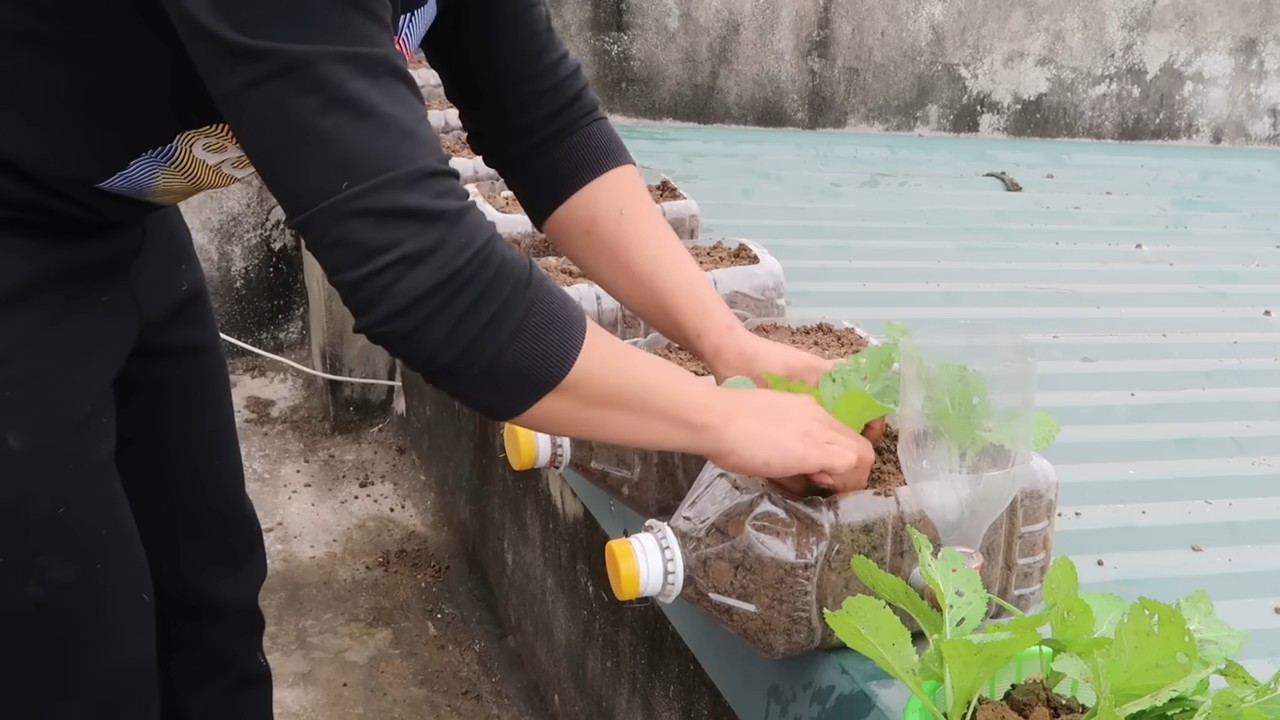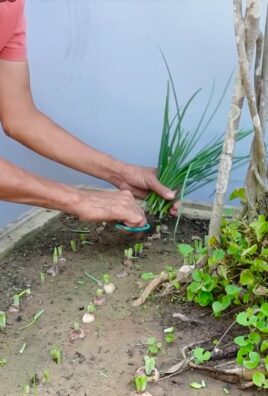Year Round Vegetable Garden: Imagine stepping outside your door, even in the dead of winter, and harvesting fresh, vibrant vegetables for your dinner table. Sounds like a dream, right? Well, it doesn’t have to be! For centuries, cultures around the globe have employed clever techniques to extend their growing seasons, ensuring a continuous supply of nutritious food. From ancient Roman greenhouses to ingenious cold frames used in medieval Europe, the desire to cultivate food beyond the typical growing season is deeply rooted in our history.
But why is a year round vegetable garden so important today? In a world increasingly concerned with food security, sustainability, and healthy eating, the ability to grow your own produce year-round offers a powerful solution. It reduces your reliance on grocery stores, minimizes your carbon footprint by cutting down on transportation, and guarantees access to the freshest, most flavorful ingredients imaginable. Plus, let’s be honest, there’s nothing quite as satisfying as nurturing a plant from seed to harvest, especially when you’re doing it in the middle of January!
This article is packed with easy-to-follow DIY tricks and hacks that will empower you to create your very own year-round vegetable garden, no matter where you live or how much space you have. I’m going to share my favorite tips and techniques for extending your growing season, protecting your plants from the elements, and selecting the right varieties for year-round success. Get ready to ditch the winter blues and embrace the joy of fresh, homegrown vegetables all year long!

Creating Your Own Year-Round Vegetable Garden: A DIY Guide
Hey there, fellow gardening enthusiasts! Ever dream of harvesting fresh veggies from your backyard, no matter the season? Well, you’re in the right place! I’m going to walk you through the steps of creating your very own year-round vegetable garden. It might seem daunting, but trust me, with a little planning and effort, you can enjoy homegrown goodness all year long.
Planning Your Year-Round Garden
Before we get our hands dirty, let’s lay the groundwork. A successful year-round garden requires careful planning.
* Assess Your Climate: This is crucial! What are your average temperatures, frost dates, and sunlight hours throughout the year? This will dictate what you can grow and when.
* Choose the Right Location: Opt for a spot that gets at least 6 hours of sunlight daily, even in winter. Consider wind protection, especially for tender plants.
* Soil Preparation is Key: Healthy soil is the foundation of any successful garden. Amend your soil with compost, aged manure, or other organic matter to improve drainage and fertility.
* Select the Right Plants: Not all vegetables thrive in all seasons. Choose varieties that are cold-hardy or heat-tolerant, depending on the time of year.
* Consider Protective Structures: Greenhouses, cold frames, row covers, and cloches can extend your growing season and protect plants from harsh weather.
* Plan Your Planting Schedule: Create a planting calendar that outlines when to start seeds indoors, when to transplant seedlings outdoors, and when to expect harvests.
* Water Wisely: Consistent watering is essential, especially during dry spells. Consider using a soaker hose or drip irrigation system to conserve water.
* Pest and Disease Management: Be proactive in preventing pests and diseases. Use organic methods whenever possible, such as companion planting, beneficial insects, and crop rotation.
Choosing the Right Vegetables for Each Season
Okay, so now that we have a general idea of what we need to do, let’s talk about what to plant when. This is where knowing your climate really comes in handy. I’m going to give you some general guidelines, but remember to adjust them based on your specific location.
* Spring: This is a great time to plant cool-season crops like lettuce, spinach, kale, radishes, carrots, peas, and broccoli. You can also start warm-season crops like tomatoes, peppers, and eggplants indoors to get a head start.
* Summer: Focus on warm-season crops like tomatoes, peppers, eggplants, cucumbers, zucchini, beans, and corn. Be sure to provide adequate water and protection from the intense sun.
* Fall: Plant another round of cool-season crops like lettuce, spinach, kale, radishes, carrots, and broccoli. You can also plant garlic and onions for next year’s harvest.
* Winter: Depending on your climate, you can grow cold-hardy crops like kale, spinach, collard greens, and Brussels sprouts. Protective structures like cold frames and greenhouses can extend your growing season even further.
Building a Simple Cold Frame
A cold frame is a simple, unheated structure that can protect plants from frost and extend your growing season. I’m going to show you how to build a basic one using readily available materials.
Materials You’ll Need:
* Four wooden boards (approximately 12 inches wide and 4-6 feet long, depending on the size you want)
* Plexiglass or clear plastic sheeting
* Hinges
* Screws
* Drill
* Saw
* Measuring tape
* Pencil
Step-by-Step Instructions:
1. Cut the Boards: Cut the wooden boards to the desired lengths. You’ll need two boards for the sides, one for the front, and one for the back. The back board should be slightly taller than the front board to create a sloped roof for better sunlight exposure. I usually make the back about 6 inches taller.
2. Assemble the Frame: Assemble the wooden boards into a rectangular frame using screws. Make sure the corners are square and the frame is sturdy. I like to use wood glue in addition to screws for extra strength.
3. Attach the Plexiglass or Plastic Sheeting: Cut the plexiglass or plastic sheeting to fit the top of the frame. Attach it to the frame using hinges. This will allow you to open and close the cold frame for ventilation and access to your plants. Make sure the hinges are securely attached.
4. Position the Cold Frame: Place the cold frame in a sunny location, preferably facing south. Make sure the soil inside the cold frame is well-drained and fertile. I always add a layer of compost before planting.
5. Plant Your Vegetables: Plant your cool-season vegetables inside the cold frame. Water them regularly and monitor the temperature inside the cold frame. On warm days, you may need to open the lid to prevent overheating.
Using Row Covers for Added Protection
Row covers are lightweight fabrics that can be placed over plants to protect them from frost, pests, and wind. They’re a simple and effective way to extend your growing season.
Materials You’ll Need:
* Row cover fabric
* Wire hoops or stakes
* Clips or weights
Step-by-Step Instructions:
1. Install Hoops or Stakes: Insert wire hoops or stakes into the ground along the rows of your vegetables. Space them evenly apart to provide support for the row cover. I usually space them about 2-3 feet apart.
2. Drape the Row Cover: Drape the row cover fabric over the hoops or stakes, covering the plants completely. Make sure the fabric is loose enough to allow the plants to grow.
3. Secure the Edges: Secure the edges of the row cover to the ground using clips or weights. This will prevent the wind from blowing the cover away. I like to use rocks or bricks.
4. Monitor Your Plants: Check your plants regularly for pests and diseases. Remove the row cover on warm days to allow for ventilation and pollination.
Extending the Season with a Greenhouse
If you’re serious about year-round gardening, a greenhouse is a worthwhile investment. It provides a controlled environment where you can grow a wide variety of vegetables, even in the coldest months.
Choosing a Greenhouse:
There are many different types of greenhouses available, from small, portable models to large, permanent structures. Consider your budget, space, and growing needs when choosing a greenhouse. I started with a small hoop house and eventually upgraded to a larger, more permanent structure.
Greenhouse Considerations:
* Location: Choose a sunny location with good drainage.
* Ventilation: Proper ventilation is essential to prevent overheating and humidity buildup.
* Heating: You may need to provide supplemental heating during the coldest months.
* Watering: Install a watering system to ensure consistent moisture.
* Pest and Disease Control: Be vigilant in preventing pests and diseases.
Tips for Success
Here are a few extra tips to help you succeed with your year-round vegetable garden:
* Start Small: Don’t try to do too much too soon. Start with a small garden and gradually expand as you gain experience.
* Keep a Garden Journal: Record your planting dates, harvest dates, and any problems you encounter. This will help you learn from your mistakes and improve your gardening skills.
* Attend Gardening Workshops: Local gardening workshops can provide valuable information and hands-on experience.
* Connect with Other Gardeners: Share your experiences and learn from other gardeners in your community.
* Don’t Be Afraid to Experiment: Gardening is a learning process. Don’t be afraid to try new things and see what works best for you.
* Succession Planting: Plant small batches of vegetables every few weeks to ensure a continuous harvest.
* Crop Rotation: Rotate your crops each season to prevent soil depletion and pest buildup.
* Mulching: Apply a layer of mulch around your plants to conserve moisture, suppress weeds, and regulate soil temperature.
* Fertilizing: Fertilize your plants regularly with organic fertilizers to provide them with the nutrients they need.
* Harvest Regularly: Harvest your vegetables when they are ripe to encourage continued production.
Troubleshooting Common Problems
Even with the best planning, you may encounter some problems in your year-round garden. Here are a few common issues and how to address them:
* Pests: Use organic pest control methods like insecticidal soap, neem oil, or beneficial insects.
* Diseases: Prevent diseases by providing good air circulation, avoiding overwatering, and using disease-resistant varieties.
* Nutrient Deficiencies: Amend your soil with compost and organic fertilizers to provide your plants with the nutrients they need.
* Frost Damage: Protect your plants from frost with cold frames, row covers

Conclusion
So, there you have it! Transforming your backyard into a thriving, year-round vegetable garden is not just a dream; it’s an achievable reality with a little planning and the right techniques. We’ve explored the core principles, from selecting cold-hardy varieties and utilizing protective structures to understanding the importance of soil health and strategic planting. This isn’t just about growing vegetables; it’s about creating a sustainable food source, connecting with nature, and enjoying the unparalleled flavor of homegrown produce, no matter the season.
The beauty of a year-round vegetable garden lies in its adaptability. Don’t be afraid to experiment! Try different combinations of vegetables, explore various protective methods, and adjust your planting schedule based on your local climate and microclimate. For instance, if you live in an area with particularly harsh winters, consider investing in a more robust greenhouse or high tunnel. Alternatively, if you have mild winters, you might be surprised at how many vegetables can thrive with just a simple cold frame or row cover.
Consider these variations to further enhance your year-round gardening experience:
* **Vertical Gardening:** Maximize your space by growing vining vegetables like peas and beans on trellises or using vertical planters for herbs and leafy greens.
* **Succession Planting:** Stagger your planting dates to ensure a continuous harvest throughout the year. Plant a new batch of lettuce every few weeks, for example, to avoid a glut followed by a shortage.
* **Companion Planting:** Strategically pair plants that benefit each other. For example, planting basil near tomatoes can deter pests and improve tomato flavor.
* **Hydroponics and Aquaponics:** Explore soilless growing methods for indoor gardening, allowing you to grow vegetables year-round regardless of outdoor conditions.
* **Mushroom Cultivation:** Integrate mushroom cultivation into your garden, utilizing shady areas and organic matter to grow delicious and nutritious fungi.
Ultimately, the key to success with a **year-round vegetable garden** is observation and adaptation. Pay attention to your plants, monitor the weather, and adjust your strategies as needed. Don’t be discouraged by setbacks; every gardener experiences failures. Learn from your mistakes, and keep experimenting until you find what works best for you.
We are confident that with the knowledge and techniques shared in this article, you can create a bountiful year-round vegetable garden that provides you with fresh, healthy produce throughout the year. We encourage you to take the plunge and embark on this rewarding journey.
We would love to hear about your experiences! Share your successes, challenges, and tips in the comments below. Let’s build a community of year-round gardeners and learn from each other. What are your favorite cold-hardy vegetables? What protective methods have you found most effective? What are some of the biggest challenges you’ve faced, and how have you overcome them? Your insights can help others achieve their gardening goals and create a more sustainable food system. Happy gardening!
Frequently Asked Questions (FAQ)
What are the best vegetables to grow in a year-round garden?
The best vegetables for a year-round garden depend on your climate, but some generally reliable options include:
* **Cold-Hardy Vegetables:** Kale, spinach, collard greens, Swiss chard, Brussels sprouts, cabbage, carrots, parsnips, leeks, garlic, onions, and winter squash.
* **Quick-Growing Vegetables:** Radishes, lettuce, spinach, arugula, and mustard greens can be planted in succession throughout the year.
* **Vegetables for Protected Structures:** Tomatoes, peppers, cucumbers, eggplant, and herbs can be grown in greenhouses or high tunnels even in colder climates.
Research the specific varieties that are best suited to your local climate and growing conditions. Look for varieties that are labeled as “cold-hardy” or “winter-hardy.”
How do I protect my vegetables from frost and freezing temperatures?
There are several ways to protect your vegetables from frost and freezing temperatures:
* **Cold Frames:** Simple, unheated structures that provide a sheltered environment for plants.
* **Row Covers:** Lightweight fabric covers that protect plants from frost, wind, and pests.
* **High Tunnels:** Larger, hoop-shaped structures that provide more space and protection than cold frames.
* **Greenhouses:** Enclosed structures that provide the most comprehensive protection from the elements.
* **Mulch:** Applying a thick layer of mulch around plants can help insulate the soil and protect roots from freezing.
* **Watering:** Watering plants before a frost can help protect them from damage.
* **Choosing the right location:** Planting in a location that is sheltered from wind and receives plenty of sunlight can also help protect plants from frost.
How do I improve the soil in my year-round garden?
Healthy soil is essential for a successful year-round garden. Here are some tips for improving your soil:
* **Add Organic Matter:** Compost, manure, and other organic materials improve soil structure, drainage, and fertility.
* **Cover Cropping:** Planting cover crops like rye, oats, or clover can help improve soil health, suppress weeds, and prevent erosion.
* **No-Till Gardening:** Avoid tilling the soil to preserve soil structure and beneficial microorganisms.
* **Soil Testing:** Test your soil to determine its pH and nutrient levels, and amend it accordingly.
* **Crop Rotation:** Rotate your crops to prevent nutrient depletion and reduce the buildup of pests and diseases.
How do I deal with pests and diseases in my year-round garden?
Pests and diseases can be a challenge in any garden, but there are several things you can do to prevent and control them:
* **Choose Disease-Resistant Varieties:** Select vegetable varieties that are resistant to common diseases in your area.
* **Practice Good Sanitation:** Remove diseased plants and debris from the garden to prevent the spread of disease.
* **Use Organic Pest Control Methods:** Introduce beneficial insects, use insecticidal soap, or apply neem oil to control pests.
* **Rotate Crops:** Rotate your crops to prevent the buildup of pests and diseases in the soil.
* **Water Properly:** Avoid overwatering, which can create conditions that favor disease.
* **Monitor Plants Regularly:** Check your plants regularly for signs of pests or diseases, and take action promptly.
How much space do I need for a year-round vegetable garden?
The amount of space you need for a year-round vegetable garden depends on your goals and the types of vegetables you want to grow. Even a small space, such as a balcony or patio, can be used to grow herbs and leafy greens. A larger backyard garden can provide a more substantial supply of vegetables. Consider your available space, your gardening experience, and your dietary needs when planning your garden. Vertical gardening techniques can help maximize space in smaller gardens.
What if I live in an apartment or don’t have access to a traditional garden space?
Even without a traditional garden, you can still enjoy fresh, homegrown vegetables year-round. Consider these options:
* **Container Gardening:** Grow vegetables in pots, containers, or raised beds on a balcony, patio, or rooftop.
* **Indoor Gardening:** Use grow lights and hydroponic systems to grow vegetables indoors.
* **Community Gardens:** Join a community garden to access a shared gardening space.
* **Vertical Gardening:** Utilize vertical space with trellises, hanging baskets, and wall planters.
How do I plan my year-round vegetable garden?
Planning is crucial for a successful year-round vegetable garden. Here are some tips:
* **Assess Your Climate:** Understand your local climate, including average temperatures, rainfall, and frost dates.
* **Choose the Right Vegetables:** Select vegetables that are suited to your climate and growing conditions.
* **Create a Planting Schedule:** Plan your planting dates based on your climate and the maturity dates of your vegetables.
* **Consider Succession Planting:** Stagger your planting dates to ensure a continuous harvest.
* **Plan for Protection:** Determine what protective measures you will need to protect your vegetables from frost and freezing temperatures.
* **Map Out Your Garden:** Design your garden layout to maximize sunlight and space.
Where can I find more information about year-round vegetable gardening?
There are many resources available to help you learn more about year-round vegetable gardening:
* **Local Extension Services:** Contact your local extension service for information specific to your region.
* **Gardening Books and Magazines:** Read books and magazines on vegetable gardening.
* **Online Resources:** Search online for articles, videos, and forums on year-round vegetable gardening.
* **Gardening Clubs:** Join a local gardening club to connect with other gardeners and learn from their experiences.
* **Workshops and Classes:** Attend workshops and classes on vegetable gardening.




Leave a Comment